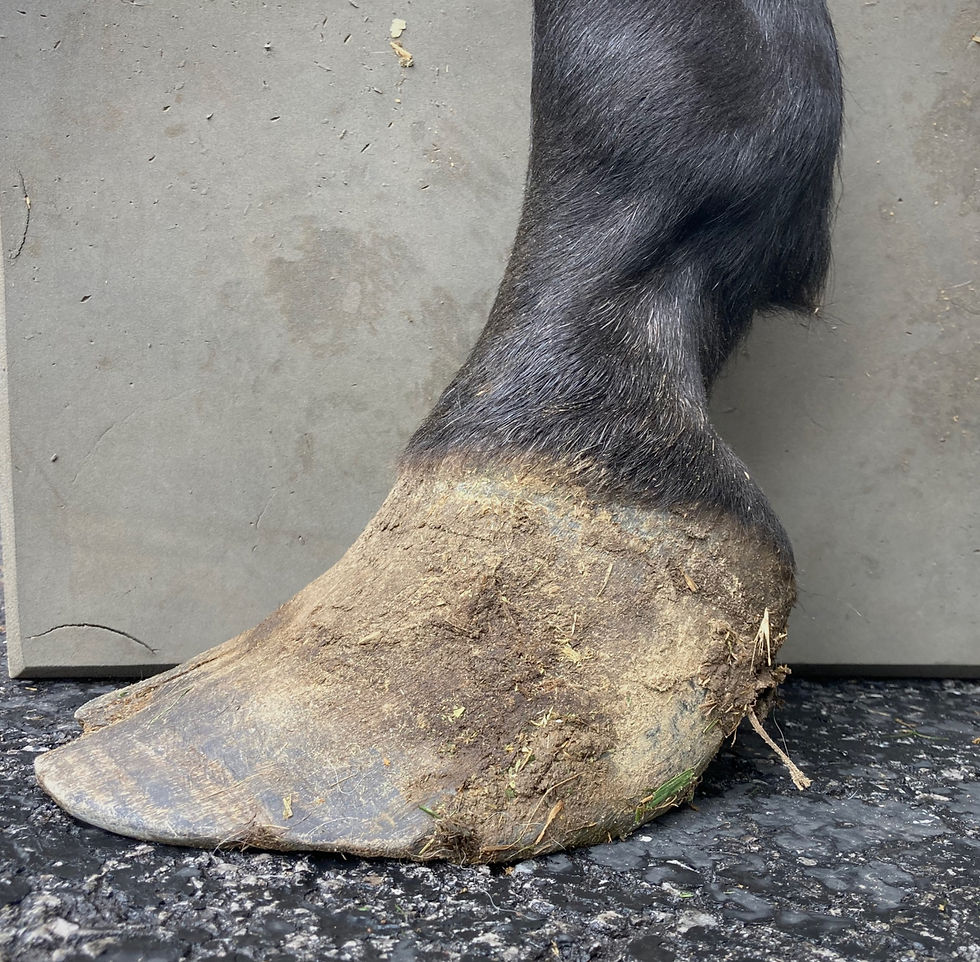Trying to Keep a Bad Thing from Happening
- Augusta Mae Wott
- Nov 8, 2022
- 3 min read
There's a proverb that has been going through my head lately. It states,
" It is better to try to keep a bad thing from happening than it is to try to fix it once the bad thing has happened. "
If you've been following my social media pages lately you'll see that there is a lot of material pertaining to founder and laminitis. We're now into fall here in the northern part of the United States. Daylight is getting shorter which is a trigger that starts telling horses to rise their ACTH levels to start prepping for winter. But........ for horses that are borderline cushings or insulin is severely high it means that laminitis is a great risk that can easily go into founder.
This is where the proverb comes into play that it's truly better to stop laminitis and founder from happening then it is to try to fix it once it does. Trying to rehab a horse from a founder episode is not an easy task. It's a mentally, emotionally, and exhausting process for horse and owner. More money is spent trying to keep the horse comfortable from the painful process and trying to find the underlying cause. Infections and abscesses commonly occur with these cases which can become very time consuming.

So how do you avoid all this ...... you try your hardest from letting it happen. Does it mean it won't .... Nope. But it does mean you can minimize your odds of having it happen. So how can you prevent laminitis and founder from happening?
Keep your horse on a TIGHT trim cycle. This doesn't mean 8 weeks or when the hooves look like they need a trim. This means every 4-5 weeks the horse should be receiving a trim. If your horse is getting up there in age talk to your vet about pulling a yearly metabolic panel to check glucose, insulin, and acth levels.
Most importantly KEEP your horses weight in check. This is a huge one !!! Keeping their weight in check is so easy. If your uncertain where your horses weight should be the Henneke Body Condition Score Chart is a great place to start. If your horse is over moderate in my opinion you're playing with fire if your horse is even borderline at risk for laminitis. Know how to tell if your horse is gaining a little too much weight. If you are not sure about your horses body condition talk with your veterinarian.
Another thing that I see so commonly when I've been contacted to help a horse through a case of founder is the horse was being fed a sweet feed. Sweet feed was originally invented for the horse that was working

hard in the fields or pulling carts. It is now being shown through research how harmful these sweet feeds are to our equine partners.Getting your sugars and starch as low as possible in your feeding program for you equine is another huge step you can take in keeping your equine from getting laminitis and founder.
Know the warning signs of laminitis. This is a huge factor in preventing full fledge founder from occurring. Normally there are little signs that show before the full onset of rotation of the coffin bone occurs. Understanding how to read your horses feet is a great tool to have.
Things to look for:
Stretched white line
Event lines on the outside of the hoof
Foot soreness when walking across gravel (no this is not normal)
Prolapsed Sole
chronic abscessing
heat in the hooves
increased digital pulse







Comments